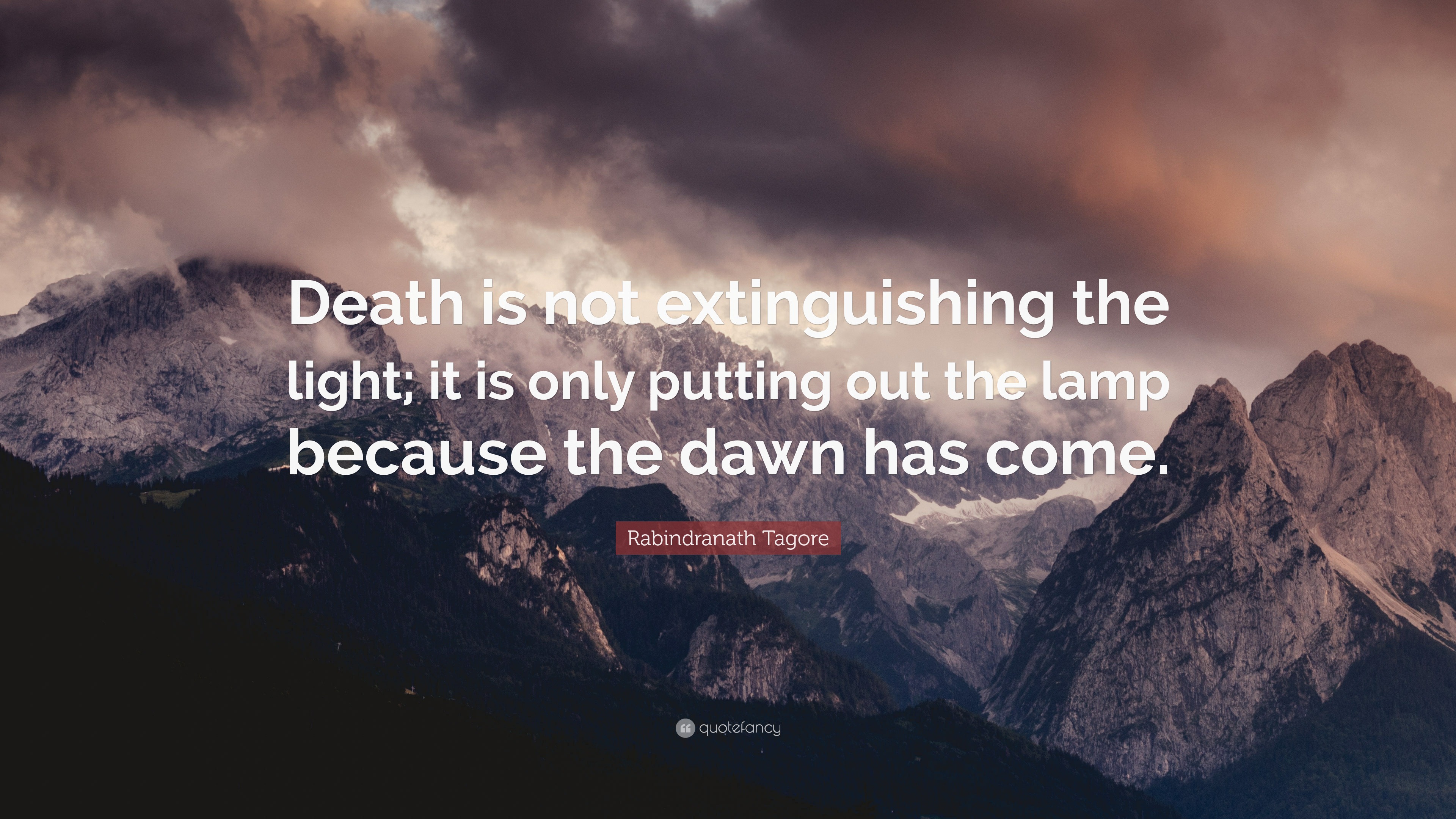

He could be talking to a specific person, perhaps the loved one whose passing away, or he could be addressing everyone, recommending a course of action. Now, the speaker uses the second-person pronoun “your” to speak about someone’s hands. The natural imagery continues into the next lines. This beautiful metaphor brings in the image of a bird landing at home, perhaps among those it cares for and meeting its end with acceptance. He wants his life, or the life of the person who is soon to pass away, to be like a flight ended with folded wings over the nest. He goes on to ask that death be “completeness” and without pain. Due to the fact that Tagore has not outlined clearly who he’s talking about allows readers to insert their own experiences into the words of the poem.

Whose death is not explained, but it’s very likely either the speaker’s own or someone close to them. The speaker asks his heart to be at peace during the “time for / the parting.” The “parting” is not defined throughout the poem, but it’s clear in the following lines that the speaker is talking about death and loss. As noted above, this and the lines which follow are examples of apostrophes. In the first lines of ‘The Gardener LXI: Peace, My Heart,’ the speaker begins by addressing his heart. Readers have to go down to the next line in order to find out what happens next. For example, the transition between lines one and two as well as lines four and five.
#WHEN I AM DEAD POEM BY RABINDRANATH TAGORE FREE#
This helps increase the musicality of the poem and the feeling of rhyme and rhythm, even if the poet is writing in free verse.Įnjambment is a common formal technique that occurs when the poet cuts off a line before its natural stopping point. For example, “Let,” which starts lines three, four, six, and nine. In this case, the speaker talks to his “heart.”Īnaphora is a type of repetition that occurs when the poet uses the same word or words at the beginning of lines. The latter is a type of figurative language that occurs when the poet’s speaker addresses someone or something that either is not present or cannot hear or respond to them. Tagore makes use of several literary devices in ‘The Gardener LXI: Peace, My Heart.’ These include but are not limited to enjambment, anaphora, and apostrophe. This means that the poem does not follow a specific metrical pattern or rhyme scheme. Before reaching a wider audience, Tagore wrote in Bengali, the language of his home in what is now Kolkata, West Bengal, India.Īs can be seen in the lines of ‘The Gardener LXI: Peace, My Heart,’ Tagore was known for his free-verse poetry. It should always be noted when reading Tagore’s poems that not all of them were originally written in English. The lines are very different lengths, ranging from one word up to eight. ‘ The Gardener LXI: Peace, My Heart’ by Rabindranath Tagore is a fifteen-line poem that is contained within a single stanza of text. The poet uses them as examples of how peaceful, still, and silent death can be.

The birds and flowers encounter death just as human beings do. These three themes are easily linked to one another, creating an image of life in its entirety and how death touches everything and everyone. In ‘ The Gardener LXI: Peace, My Heart,’ the speaker engages with themes of life, death, and nature. Rather than fighting it, the speaker alludes, one should enter into it like a bird or a flower, with the “folding of the wings.” He speaks to “you” in the second half of the poem, encouraging “you” to take into consideration everything he’s said and offering to light this listener’s way into the next life. It’s inevitable, and therefore not worth worrying about. In the first lines of ‘The Gardener LXI: Peace, My Heart,’ the speaker begins by addressing his heart and the nature of death. ‘ The Gardener LXI: Peace, My Heart’ by Rabindranath Tagore is a poem filled with beautiful images depicting death as something one should accept.


 0 kommentar(er)
0 kommentar(er)
